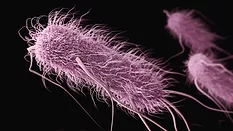
Methods
Testing and analysis methods include processes and procedures in use or under development for performing microbiological testing, product sampling, environmental monitoring, etc.
Articles
More ArticlesNever miss the latest news and trends driving the food safety industry
eNewsletter | Website | eMagazine
JOIN TODAY!Copyright ©2025. All Rights Reserved BNP Media.
Design, CMS, Hosting & Web Development :: ePublishing


